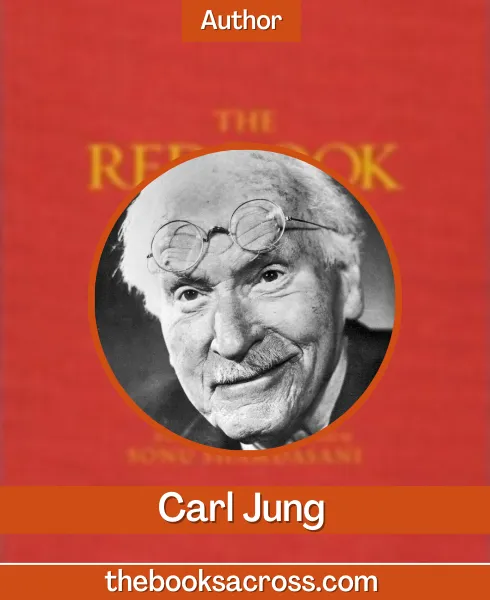The Red Book PDF, written by Swiss psychiatrist Carl Jung in 1909-1914 and published in 2009, is a psychological journey through the creative process of self-discovery. The book was initially kept private and not released to the public until 2009 by W.W. Norton & Company.
The themes explored within The Red Book include identity, spirituality, and transformation. At its core, the book is a recounting of Jung’s own psychological journey from modern science to ancient mysticism. Through his exploration of dreams, fantasies, and mythology – combined with Eastern and Western philosophy – he develops an individualized approach to understanding the unconscious psyche.
The Red Book has been praised by both Jungian analysts and spiritual seekers alike, with many claiming it to be a masterpiece of modern psychology. It has sold hundreds of thousands of copies worldwide and has been translated into numerous languages. The book is available in hardcover and paperback formats, as well as an illustrated edition with original calligraphy from Jung’s own hand.
Table of Contents
The Red Book Summary
The book begins with an account of a strange experience Jung had in 1913, when he fell ill and began to experience visions. He ultimately decided to undertake a period of self-exploration and introspection, which led him to write The Red Book. This book is essentially the record of his inner journey as he explored the depths of his own psyche.
The Red Book is written in a narrative style, with Jung himself as the protagonist. It chronicles his spiritual journey and his encounters with various figures from mythology, religion, and literature. He makes frequent use of symbols and allegories to illustrate the psychological processes he experienced during this time. In the book, Jung also develops many of his theories on psychotherapy, dream interpretation, and the collective unconscious.
The Red Book culminates in a series of visions that Jung experienced at the end of his journey. These visions led him to conclude that human beings are simultaneously connected with both their inner and outer worlds and that both must be taken into account when seeking self-understanding.
Details of The Red Book
| Book | The Red Book |
| Author | Carl Jung |
| Original language | German |
| Originally published | October 7, 2009 |
| Category | Biography |
| Publisher | Philemon Foundation and W. W. Norton & Co |
| Total Pages | 404 |
| Format | PDF, ePub |
Multiple Languages Editions of The Red Book
The Red Book has been translated into multiple languages, making it accessible to a much larger audience. In 2010, the first English translation was released and immediately became a best-seller.
| Book Editions | Check Now |
|---|---|
| English | Check Price |
| French | Check Price |
| Spanish | Check Price |
| Chinese | Check Price |
About the Author
Carl Jung was a Swiss psychologist and psychiatrist who founded analytical psychology. He is considered one of the most influential thinkers of the 20th century, developing theories about the collective unconscious, archetypes, and dream interpretation.

Jung was born in 1875 in Kesswil, Switzerland to Paul Achilles Jung and Emilie Preiswerk. His father was a pastor and his mother came from a wealthy Swiss family. Jung was very close to his mother, who encouraged him to pursue a career in medicine. He went on to study at the University of Basel and graduated with a degree in psychiatry and scientific psychology.
Jung became interested in psychoanalysis after meeting Sigmund Freud in 1907 and began developing his own theories, which focused on the collective unconscious as well as archetypes and symbols. He also developed an interest in alchemy and mythology, believing these themes held deep psychological importance.
Jung’s theories had a major impact on psychology, particularly when it came to exploring the inner self. His ideas about the collective unconscious and archetypes helped to shape the world of psychotherapy, paving the way for a deeper understanding of our innermost selves.
The Red Book PDF Free Download
Click on the download button below to get a pdf file of The Red Book.
Similar Books to The Red Book
- Memories, Dreams, Reflections by Carl Jung
- Modern Man in Search of a Soul by Carl Jung
- The Wolf of Wall Street by Jordan Belfort
- The Undiscovered Self: The Dilemma of the Individual in Modern Society by Carl Jung
- Aion: Researches into the Phenomenology of the Self by Carl Jung
- Transformations and Symbols of the Libido by Carl Jung
- Answer to Job by Carl Jung
- Psychology and Religion: West and East by Carl Jung
- Man and His Symbols by C.G. Jung, M.D., Ed. Hinkle, Jolande Jacobi, Aniela Jaffe
- The Archetypes and The Collective Unconscious by C.G. Jung
FAQs(Frequently Asked Questions)
Is The Red Book difficult to read?
The Red Book by Carl Jung is an incredibly complex work, and many readers might find it difficult to comprehend.
How long does it take to read The Red Book?
The Red Book is very dense and contains a great deal of Jung’s philosophy, so it may take some time to read the entire book.
What does The Red Book talk about?
The Red Book is a record of Jung’s journey into his unconscious mind and the various symbols, visions, and ideas he encountered during that time.
Why is it called The Red Book?
The Red Book got its name due to the red leather cover that Jung had commissioned for it.
Is The Red Book worth reading?
The Red Book is an incredibly influential work, and many mental health professionals consider it essential reading for anyone with an interest in Jungian psychology.







